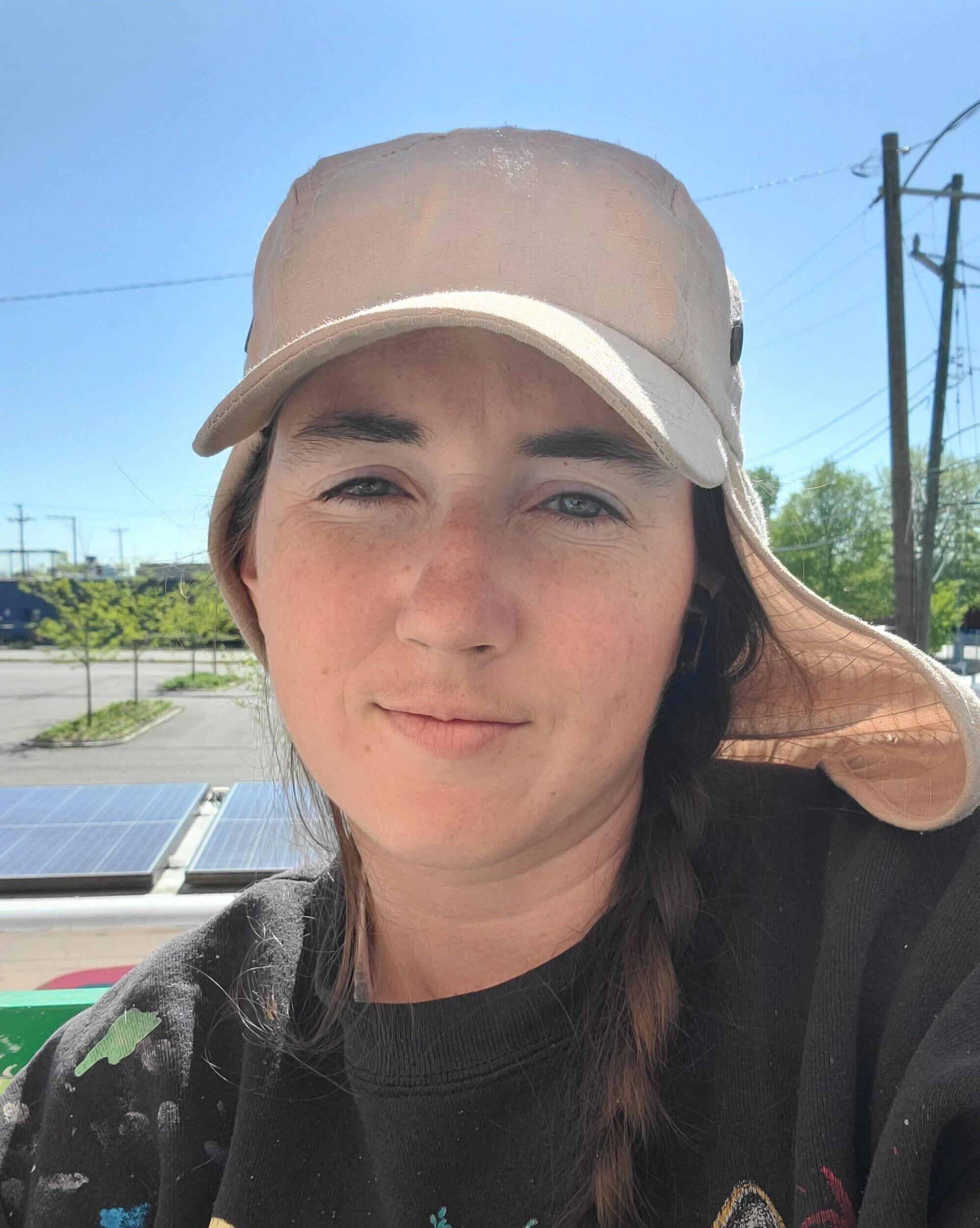
Sept. 13, 2023
In huge Scott’s Addition mural, VCU alum Emily Herr pays homage to area’s industrial history and the creativity it inspired
Share this story
Emily Herr estimates she’s painted around 200 murals as a professional artist. That’s just in the decade since she graduated from Virginia Commonwealth University in 2013.

And in the three months since unveiling her most ambitious mural in June in Scott’s Addition, she’s completed two more — one in the alley behind a private residence in Richmond’s Fan District, and the other on a converted apartment building south of the James River. The latter was a collaboration with a Washington-based artist, but still. That’s a lot – and a long way from her first mural on her high school bedroom wall.
Not to say Herr rushes through her work. The Scott’s Addition piece, titled “Starting Space: A Love Letter to the Creative Process,” took the 31-year-old Richmond native nearly three years to complete, from conception to the last brushstroke.
“Starting Space” is aptly named. The idea was to connect the building — a newly constructed apartment complex, Otis — with the existing community, which started as an industrial center that morphed into a DIY hot spot for creators.
“[The clients] emphasized wanting to relate to the community that they're moving into – because this is brand new construction, inviting a population of maybe 500 residents into the apartment building,” Herr said. “So they wanted in some way to connect this building with the existing community that was already there.”

Additionally, the clients wanted to reflect the industrial nature of Scott's Addition and pay homage to it.
Herr took it one step further.
“They referenced [its] industrial history,” she said. “And my mindset about that was, yes, there has been an industrial history here, but the more relevant and more recent culture is this smaller scale of DIY culture of all of these smaller workshops and studios that proliferated throughout the rest of the city into bigger organizations as they got the space and time in Scott's Addition to germinate.
“They were able to grow and then move on into bigger and better spaces, in some cases.”
Studio Two Three, HackRVA and Rag & Bones are examples of organizations that got their footing in Scott's Addition before moving to larger spaces in the Richmond area.
Herr said she wanted “Starting Space” to “recognize the space that Scott’s Addition gave a lot of people by being cheap and gritty … and recognizing that spaces like that – neighborhoods, buildings – are fundamental to this growth process that it takes for things to germinate.
“It was a really good opportunity to recognize and memorialize the value of the spaces that led to this kind of growth.”

At 4,000 square feet, the mural is Herr’s largest to date, and it’s also perhaps the most detailed.
“It was both pretty big, with a lot of design process that went into it, and also a lot of detail in the finished design,” she said. “So it’s really maximizing every element of the project.”
As with each of her works, Herr tried to give “Starting Space” many layers that viewers could identify the more the piece is experienced. Maybe their first impression is that the mural is colorful, she said. Perhaps on the next viewing, they’ll recognize the figures and materials, the imagery of people working and making things.
“And then there’s a flow from left to right, from people’s hands and close-ups of materials and products all the way over to the right end, which is bigger with zoomed-out neighborhood streets and buildings,” Herr said. “So thinking about the making and creative process as sort of that flow that one impacts the other — the small [things] we make, grow and build on each other to change the larger world around us.”
Subscribe to VCU News
Subscribe to VCU News at newsletter.vcu.edu and receive a selection of stories, videos, photos, news clips and event listings in your inbox.



